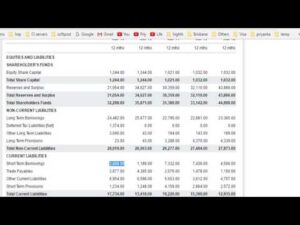IAS 1 Presentation of Financial Statements
The former employee has done a nice job of keeping track of the accounting records, so you can focus on your first task of creating the June financial statements, which Chuck is eager to see. (Figure 2) shows the financial information (as of June 30) for Cheesy Chuck’s. Along with the cash flow statement, they comprise the core of financial reporting. Errors or omissions in either of them create inaccurate results across all of them. The balance sheet summarizes the financial position of a company at a specific point in time.
A company’s balance sheet is set up like the basic accounting equation shown above. On the left side of the balance sheet, companies list their assets. On the right side, they list their liabilities and shareholders’ equity. Sometimes balance sheets show assets at the top, followed by liabilities, with shareholders’ equity at the bottom. Depreciation and other capitalized expenses on the income statement need to be added back to net income to calculate the cash flow from operations.
Sample Balance Sheet and Income Statement for Small Business
Recall that equity is also called net assets (assets minus liabilities). If you take the total assets of Cheesy Chuck’s of $18,700 and subtract the total liabilities of $1,850, you get owner’s equity of $16,850. An income statement is a financial report detailing a company’s income and expenses over a reporting period. It can also be referred to as a profit and loss (P&L) statement and is typically prepared quarterly or annually. After you generate your income statement and statement of retained earnings, it’s time to create your business balance sheet. Again, your balance sheet lists all of your assets, liabilities, and equity.

Since revenues ($85,000) are greater than expenses ($79,200), Cheesy Chuck’s has a net income of $5,800 for the month of June. Let’s prepare the income statement so we can see how Cheesy Chuck’s performed for the month of June (remember, an income statement is for a period of time) See (Figure 3). For a given period of time, how much did the goods sold and services provided, sell for?
Management and Retained Earnings
Capital expenditures add to the PP&E account on the balance sheet and flow through cash from investing on the cash flow statement. Each of the three financial statements has an interplay of information. Financial models use the trends in the relationship of information within these statements, as well as the trend between periods in historical data to forecast future performance. From there, gross profit is impacted by other operating expenses and income, depending on the nature of the business, to reach net income at the bottom — “the bottom line” for the business.
- Retained earnings are calculated through taking the beginning-period retained earnings, adding to the net income (or loss), and subtracting dividend payouts.
- A balance sheet shows a snapshot of a company’s assets, liabilities and shareholders’ equity at the end of the reporting period.
- During the same period, the total earnings per share (EPS) was $13.61, while the total dividend paid out by the company was $3.38 per share.
- To calculate total income, subtract operating expenses from gross profit.
- These three core statements are intricately linked to each other and this guide will explain how they all fit together.
- This company is a small retail store that makes and sells a variety of gourmet popcorn treats.
For Printing Plus, the following is its January 2019 Income Statement. The stock price for a given company can advance or decline based on a wide variety of factors. However, companies that perform well financially by increasing their earnings, net worth and cash flow are typically rewarded with a higher stock price over time. https://kelleysbookkeeping.com/ The income statement is read from top to bottom, starting with revenues, sometimes called the «top line.» Expenses and costs are subtracted, followed by taxes. The end result is the company’s net income—or profit—before paying any dividends. Before we go any further, this is a good spot to talk about your startup accounting.
Cash flow statement
A cash flow projection lets you estimate the money you expect to flow in and out of your business in the future. Forecasting your business’s future cash flow can help you predict financial problems and give you a clear picture of your company’s financial future. Treat the income statement and balance sheet columns like a double-entry accounting system, where if you have a debit on the income statement side, you must have a credit equaling the same amount on the credit side. In this case we added a debit of $4,665 to the income statement column.
Or, your company could be in negative cash flow territory, which indicates that you’re spending more money than what you’re bringing in. The adjustments total of $2,415 balances in the debit and credit columns. If there are retained earnings, owners might use all of this capital to reinvest in the business and grow faster. Others might split the gains, or distribute the surplus to investors. If a company has a debt-to-equity ratio of 2 to 1, it means that the company has two dollars of debt to every one dollar shareholders invest in the company.
PLACE Business Education: Financial Statements — Chapter Summary
Notice that net income is the bottom line but it includes a provision for income taxes and also interest expense. In preceding chapters, we illustrated the income statement What Goes On Income Statements, Balance Sheets And Statements Of Retained Earnings? with only two categories—revenues and expenses. In contrast, a multi-step income statement divides both revenues and expenses into operating and nonoperating (other) items.

